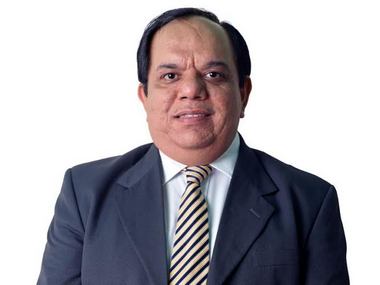At a time when corporate IT is going gaga over the Internet of Things, a respected CIO of a large Indian firm feels that IoT is today nothing more than just hype. Vijay Sethi, CIO of Hero MotoCorp, feels that the IoT – the most-discussed technology today – is at the same stage where cloud was eight years back. “Eight years back, when we were doing a hosting of our servers outside we used to call it cloud. Today people are calling anything and everything as IoT,” Sethi tells Firstpost. “But, the problem is most of the people don’t even understand what IoT is from a business perspective, especially where it will impact the business, how will it impact the business.” [caption id=“attachment_2226236” align=“alignleft” width=“380”]  Vijay Sethi, VP & CIO, Hero MotoCorp[/caption] He tries to explain his point further by citing an example of a company which wants make an IoT-enabled motorcycle – which means anything that’s happening to the engine or tyre or any other part, real-time information gets exchanged with some central location and someone is monitoring it. “To make an IoT-enabled motorcycle, a company needs to tie up with a communications provider or in simple words take a SIM card with data connectivity which keeps on sending data. Now who pays for the data charges? Who owns that SIM? As the motorcycle is moving from the warehouse to a dealer, and then it will be sold to a customer, customer further sells it to other customer. The bigger question is “Who is the owner?” he explains. More than that, there could be some privacy issues when tomorrow the customer will know that he’s been tracked wherever he travels on that motorcycle,” he says. We hear a lot about IoT-enabled refrigerators at home that can be monitored by just a press of button from anywhere. “Again in that case, it’s still not clear who will provide the internet mechanism – the company or the customer. Who will monitor it on a regular basis, and who will be responsible if something goes wrong with the internet connectivity, and who will pay for the regular data tariffs? What if I somehow hack into the SIM card and start using it for my personal work, what happens then?” “Both security and privacy are big issues.” “These are some of the questions that need to be answered at this moment,” Sethi feels. People should understand what are the practical challenges in implementing IoT? How will it actually work? Will it work only within the enterprise? IoT for enterprises is fine as the company can take full ownership of data services, but the moment end-consumers become the target, it’s confusing, he says. “However, as of now the only viable business model I can think of is similar to a smartphone. For example: A company can make an IoT-enabled motorcycle which has place for a chip (similar to a smartphone where there’s a slot for SIM card). And, then it’s the customer who will decide whether he wants to put a chip or not. If yes, the entire liability and responsibility for the maintenance is with the customer, and the company has no role. Because companies will not get into providing the actual connectivity, manufacturing companies will surely not.” Lack of framework In India, no one has any clarity on IoT. It’s not about standards. There are some basic things that are missing. There’s no policy framework which supports IoT. Commenting on the recently constituted IoT panel in India, Sethi adds, “I feel that is a right way of approaching IoT. If we talk about cloud, no one can even today tell which cloud is better Amazon or Microsoft, as there is no framework. So, at least people have learnt from all those things and are first working on a framework.” Tips for CIOs CIOs first have to understand “what is IoT and what is not IoT.” They also need to understand in Indian ecosystem whether software and application providers also understand IoT. And, then attempt proof-of-concepts. Start small and try it out. Learn from experiments, failures, and experiences. Also, there are cost implications of IoT that CIOs should be wary of – one is the cost of sensors; the cost of communication; and the most important is the cost of monitoring 24x7 which means you need to put in a command centre and people, and take action on the entire thing, and then work. When will IoT be a reality? “In India, we still struggle with internet connectivity. There are going to be some early adopters, but in our country I don’t see IoT taking off in next four to five years,” he claims. “Only thing that could start earlier, that is similar to IoT could be M2M (machine to machine communication).”
At a time when corporate IT is going gaga over the Internet of Things, a respected CIO of a large Indian firm feels that IoT is today nothing more than just hype.
Advertisement
End of Article


)

)
)
)
)
)
)
)
)



